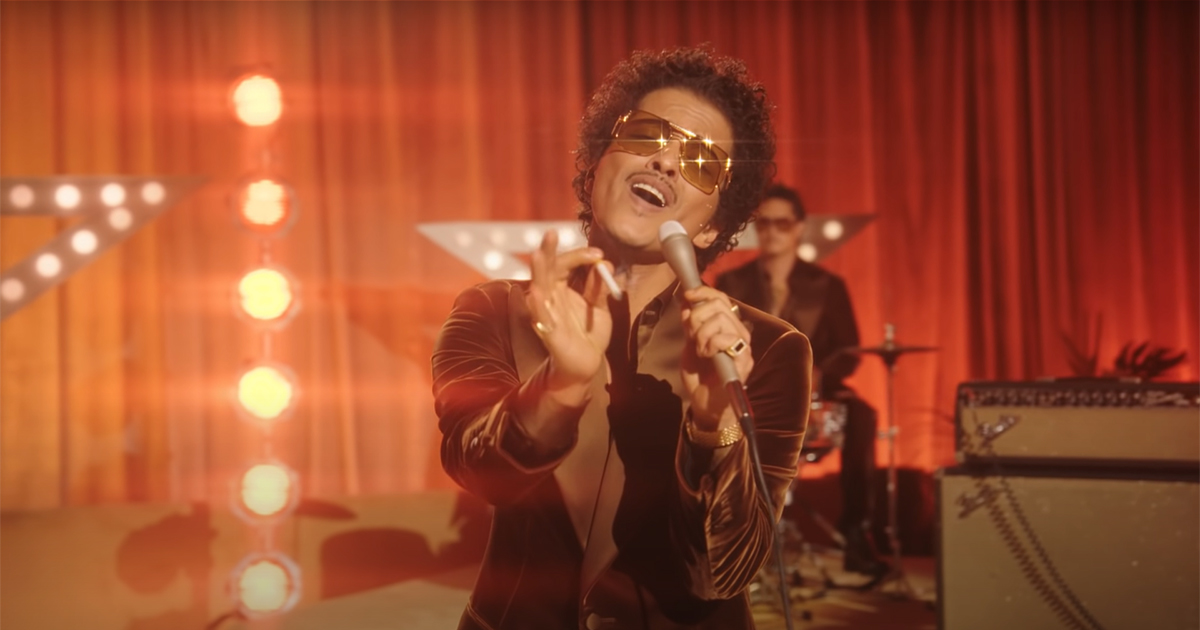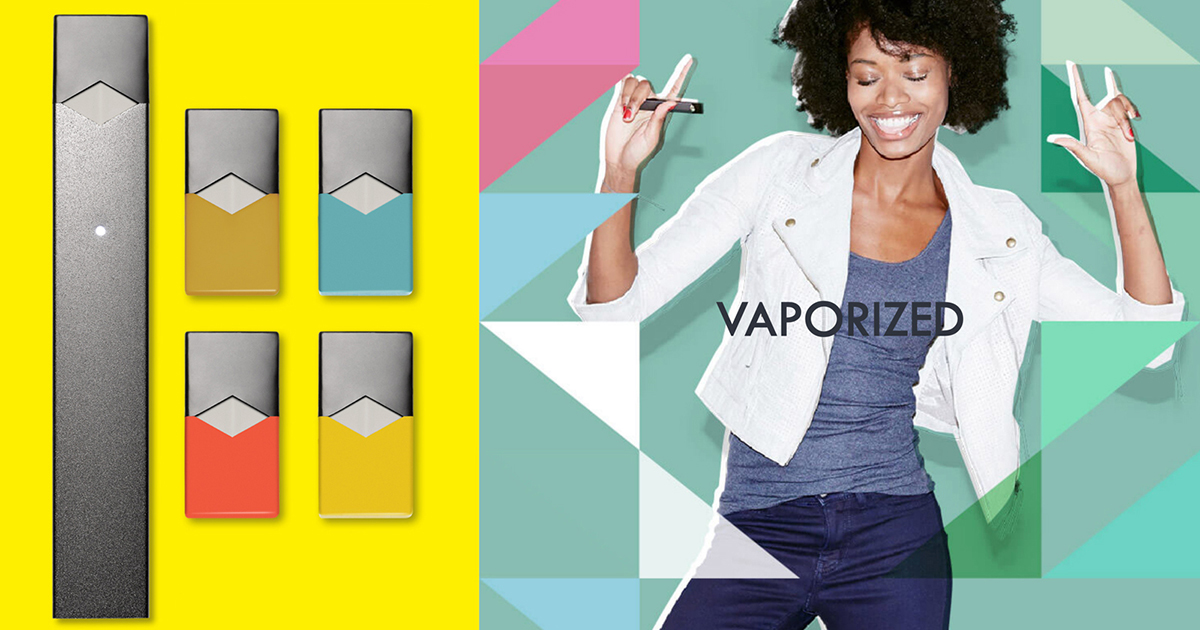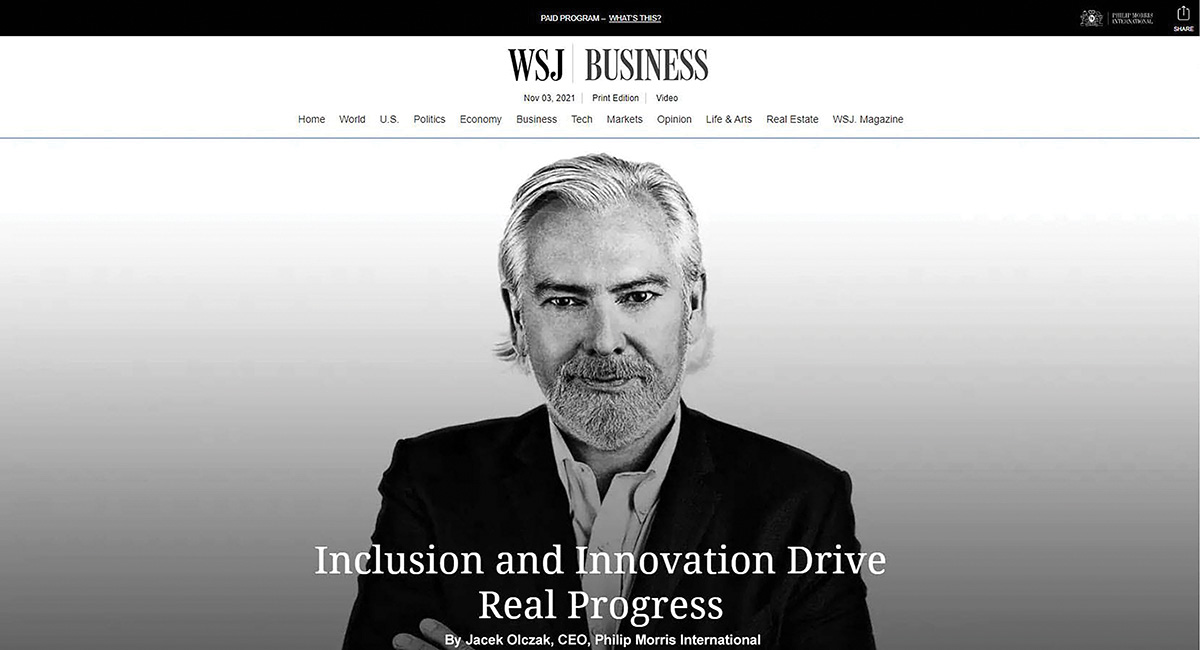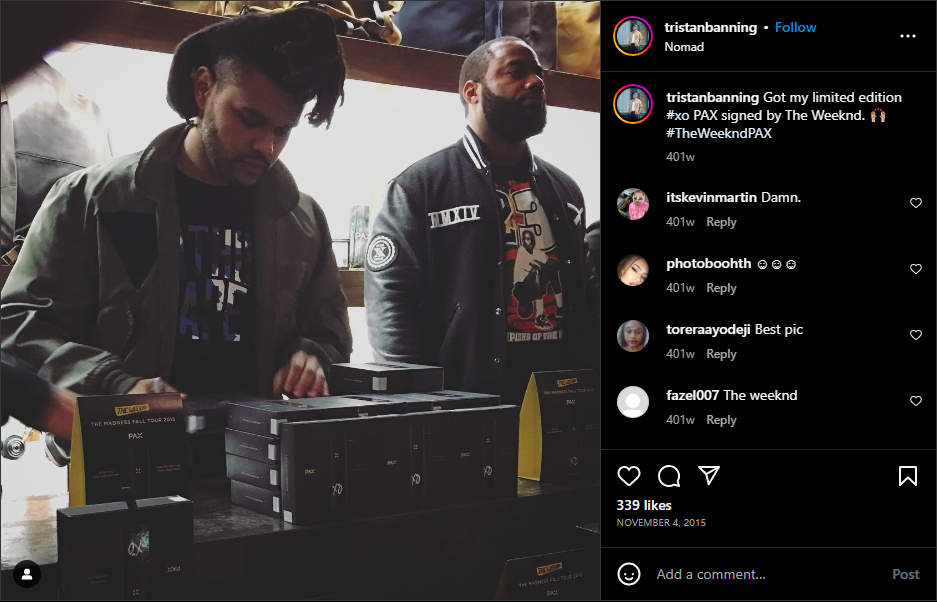Industry influencer: how tobacco content is infiltrating social media
Young people in the U.S. are spending more time online than ever, where they increasingly encounter potentially harmful content and pervasive misinformation in a loosely regulated social media landscape. Nearly all teens (95%) use social media, and more than a third say they use it “almost constantly.” In May 2023, the U.S. Surgeon General issued an advisory stating that social media can have a “profound risk of harm to the mental health and well-being of children and adolescents.” Earlier in the year, the World Economic Forum included misinformation and disinformation as a major global risk.
Tobacco content, including branded promotional content and misinformation about tobacco and nicotine, is commonplace on social media. This content is of serious concern, especially given the link between social media and tobacco use. Research shows exposure to tobacco content on social media doubles the odds of tobacco use among young people compared to those who are not exposed.

A growing body of Truth Initiative® research, much of it focused on misinformation surrounding nicotine, suggests that the tobacco industry is using social media platforms popular with young people to advertise tobacco products, control tobacco-related conversations, evade flavored tobacco restrictions, and spread misinformation about nicotine:
- Vaping advocates largely control tobacco conversations on social media and amplify misinformation, including false information about the relationship between COVID-19 and nicotine.
- The spread of misinformation about nicotine is a serious concern, with many young adults unaware of the dangers of nicotine.
- Those who believe misinformation about nicotine tend to have positive perceptions of the tobacco industry as well as higher rates of relapses in quitting vaping.
- The tobacco industry is using social media to undercut tobacco regulations at every opportunity.
Current tobacco advertising regulations and policies do not fully cover today’s rapidly evolving social media and tobacco product landscape, leaving ample opportunity for the tobacco industry to take advantage of this gray area to spread misinformation and recruit new tobacco users. Given the current backdrop of heightened concerns about mental health and the dangers posed by social media to young people, the tobacco industry’s tactics on social media deserve greater scrutiny.
Truth Initiative has documented significant efforts by tobacco industry players to reframe their image, position themselves as public health advocates, and market new tobacco products as healthier alternatives while continuing to sell deadly combustible products. Although the public still has negative perceptions about the tobacco industry, there is concern that the tobacco industry will take advantage of rampant misinformation on social media to subtly shift these perceptions.
Loosely enforced social media marketing restrictions on tobacco products give the tobacco industry a chance to chip away at decades of progress made in reducing tobacco advertising, especially in the current online era of widespread misinformation. Findings call for strong regulation, monitoring, and public attention. Given what we know about the tobacco industry’s past dishonesty, these recent tactics on social media need to be recognized as deceptive attempts to gain public trust, sow misinformation, recruit new tobacco users and ultimately grow sales and profits.

When celebrities become unpaid spokespeople for Big Tobacco
Tobacco-related content on social media contributes to an overall problem of normalization of smoking and vaping in pop culture, where it is often portrayed as glamorous, edgy, and fashionable. According to Truth Initiative’s fifth annual analysis of tobacco imagery in entertainment, “While You Were Streaming: Tobacco’s Starring Role,” 60% of the most popular TV shows among 15- to 24-year-olds in 2021 contained depictions of tobacco use, as did nearly half (47%) of top-rated films released in 2021. In addition, top music videos from 2021 – many of which were viewed more than 2 billion times – contained over 200 depictions of tobacco use.
These images have influence, especially among youth and young adults, who are uniquely susceptible to social and environmental influences to use tobacco. Peer-reviewed research has shown young people with high exposure to on-screen tobacco images are three times more likely to start vaping nicotine compared to their peers with no exposure. This imagery extends to social media, where celebrities, many of whom have millions of young followers, can be seen posting photos of themselves smoking or vaping. A 2018 Truth Initiative analysis found that these “smoking selfies” may help recruit young users, normalize tobacco use, and effectively turn celebrities into unpaid spokespeople for the tobacco industry.
Industry promotion of products on social media
The tobacco industry’s use of social media to promote its products is nothing new. Makers of the popular e-cigarette JUUL conducted a massive influencer engagement campaign as part of the product’s 2015 launch, employing an entire department dedicated to social media influencer marketing. A 2019 Truth Initiative study published in Tobacco Control found that more than half of Instagram posts about JUUL were youth-appealing.
Fast forward to today and the tobacco industry continues to promote its products on social media, with new products and different social media platforms. Truth Initiative research published in Social Media and Society suggests that an initial wave of tweets about heated tobacco products that included branded messages and links to commercial sites saturated online conversations. Twitter posts about new heated tobacco products like IQOS, Ploom, and Glo, the majority of which were by commercial accounts, raised product awareness and successfully generated organic posts and word-of-mouth content between 2016 and 2021. Tweets also included conflicting and possibly misleading information on the health effects of heated tobacco products, potentially adding to misinformation about the products.
Likewise, a separate study found that vaping advocates used tweets by the U.S. Food & Drug Administration (FDA) about e-cigarette regulation to spread anti-regulatory messages. Rebuttal messages by vape advocates were disseminated far more broadly than the FDA’s original tweets, illustrating vape advocate dominance of social media platforms – particularly Twitter.
Influencers on Instagram frequently posted branded vaping content that violates both federal and platform regulations, according to Truth Initiative research published in Frontiers in Public Health. Content promoted specific brands, failed to disclose brand relationships, rarely included warning labels about the addictive potential of nicotine, and even featured youth-appealing cartoon imagery.
Not only are tobacco industry players generating content about tobacco on social media, they are also actively sharing and spreading content – some of which is inaccurate. Vaping advocates played a key role in amplifying and re-tweeting misleading content about tobacco, nicotine, and COVID-19 on Twitter, according to a Truth Initiative study published in the Journal of Medical Internet Research. The study found that the majority of the most active Twitter users discussing COVID-19 and nicotine or tobacco products had pro-vaping perspectives. Tweets supporting disinformation that nicotine has a protective effect against COVID-19 were circulated 20X more often than those that debunked the claims. The research suggests that Twitter users with pro-vaping perspectives can play an outsized role in undermining effective public health messaging.

Spreading tobacco misinformation has serious implications
Tobacco misinformation on social media may be contributing to public confusion about the health risks posed by non-combustible nicotine and tobacco products, especially among young people. Truth Initiative research found that young adults were largely unaware of the dangers of nicotine, with many believing incorrectly that nicotine is no more harmful than a cup of coffee or that it is only addictive when smoked from a cigarette, for example. Truth Initiative research also found that belief in misleading claims about nicotine, especially regarding COVID-19, was tied to holding more positive beliefs about the tobacco industry. Health misinformation, which has gained traction during the COVID-19 pandemic, can ultimately undermine public health and regulatory efforts to curb youth nicotine use.
Misinformation can also undermine quit attempts. A Truth Initiative study published in Health Education and Behavior found that recall and belief in misinformation about nicotine and COVID-19 is associated with relapse among young adult e-cigarette users who made a quit attempt during the pandemic. The research underscores the importance of countering health misinformation about COVID-19, especially as it relates to tobacco and nicotine use. To protect the health of young people, this means paying greater attention to social media, where much of this discourse occurs.
Misperceptions about COVID-19 and nicotine
In 2020, misinformation about the rapidly evolving COVID-19 pandemic flooded online news and social media outlets. The authors of one early study that was not peer-reviewed, which found smokers were less likely to be admitted for intensive care due to COVID-19, speculated that nicotine’s anti-inflammatory properties may have been responsible for the link. Research to date does not support this claim, but instead indicates that smoking increases the odds of disease progression and severe symptoms. Vaping and using smokeless tobacco products are also likely risk factors for infection and progression of COVID-19. There is conclusive evidence that smoking weakens the immune system and increases the risk of infectious diseases and respiratory infections. See “COVID-19: the connection to smoking and vaping, and resources for quitting” for more information.
E-cigarette users and the tobacco industry use social media to get around regulations
By their nature, social media sites offer a platform for users to react and contribute to news and information. On the heels of e-cigarette regulation, both the tobacco industry and e-cigarette users alike took to social media sites to find and promote alternative products. After the FDA removed flavored cartridge-based e-cigarettes from the market in 2020, the tobacco industry immediately pivoted its social media marketing to promote other flavored e-cigarette products still permitted on the market, including flavored disposable e-cigarettes, which soared in popularity. Truth Initiative research published in Tobacco Control showed that more than 40% of Instagram posts by e-cigarette vendors and marketers promoted flavored products while more than 2,000 posts overtly mentioned alternatives to restricted flavored products or strategies to evade flavor sales restrictions implemented in 2020.
E-cigarette users correspondingly sought out alternate products on social media platforms when faced with tighter regulation of flavored e-cigarettes. Many e-cigarette users turned to Reddit to discuss products one could “still get” or “JUUL compatible” alternatives after the FDA restricted some flavored e-cigarettes, according to research published by Truth Initiative in the International Journal of Environmental Research and Public Health in 2022. Taken together, these studies suggest that social media platforms may be a powerful tool for the tobacco industry to evade restrictions and subvert policies designed to protect the health of young people.
Tobacco industry’s efforts to repair their reputation and co-opt harm reduction
By taking over social media conversations and leveraging social media to promote tobacco products and evade regulation, the tobacco industry is essentially using social media as its latest platform for industry interference, something they have done in the past with other platforms. Truth Initiative has documented the tobacco industry’s efforts to reframe and repair its public image and activity to interfere in scientific spaces.

Many of these activities are discussed in Truth Initiative’s 2019 report on tobacco industry rebranding and involve marketing tactics, expanding product portfolios to attract new customers, and sponsoring research in established journals. A few notable examples include:
- Buying a new reputation:
- Tobacco companies have used major news outlets including The Wall Street Journal and Washington Post to makeover their corporate image, spending millions on ads designed to look like opinion pieces in order to reposition themselves as promoters of harm reduction and supporters of public health.
- Sponsoring studies:
- One-fifth of authors of peer-reviewed publications about tobacco harm reduction were supported by the tobacco industry, according to a 2022 study. Tobacco industry-funded authors publishing about tobacco harm reduction had more publications and collaborators than researchers who were not industry-funded.
- The makers of the popular e-cigarette JUUL sponsored an entire special issue of the American Journal of Health Behavior in 2021 to showcase their industry-funded research.
- Phillip Morris International (PMI), the makers of Marlboro, funded the Foundation for a Smoke-Free World in 2017, which has since worked to infiltrate scientific spaces and shape public discourse. The foundation published articles in established research journals by evading conflict of interest policies or by obscuring their role in funding.
These latest examples build on years of the tobacco industry aggressively pushing non-combustible tobacco product alternatives and claiming that the industry can be part of the “public health solution” to end smoking. There is concern that the tobacco industry may take advantage of rampant misinformation on social media to shift perceptions of the tobacco industry that have historically been negative. Philip Morris International, for example, went live with a new YouTube channel for “Unsmoke Your World,” in January 2023, clearly trying to increase the company’s reach on a platform extremely popular with young people.
Social media solutions: moderating tobacco marketing on social media
YouTube was the most popular social media website or app among young people in 2022, used by 95% of teens. TikTok, Instagram, Snapchat, Facebook, and Discord are also popular with this demographic. Despite the popularity of these platforms, policies regulating misinformation and tobacco content on social media are constantly in flux. Efforts to monitor and remove misinformation on social media platforms have declined recently, as companies lay off staff responsible for monitoring content and dismantle policies designed to vet misinformation. In January 2023, YouTube fired several of its misinformation experts, and Twitter stopped enforcing its COVID-19 misinformation policy altogether in 2022.
Most major social media platforms like Facebook, Twitter, YouTube, Reddit, and TikTok have had policies banning the explicit advertising of tobacco products and services on their platforms for years, with slight variations in language to include newer tobacco or nicotine products like e-cigarettes or heated tobacco. However, posts by influential users or “influencers” paid to promote tobacco products are not as obvious as ads – especially to young and impressionable social media users. After congressional testimony called attention to JUUL for using thousands of influencers to market e-cigarettes to teens in 2019, Facebook and Instagram announced that they would no longer allow influencers to promote vaping or tobacco products using branded content. However, these policies do not appear to be enforced.
Regulating social media posts
Today, social media posts are subject to a smattering of piecemeal regulations:
- The Federal Trade Commission requires social media influencers to disclose brand relationships.
- The FDA requires that a nicotine health warning label occupy at least 30% of an advertisement.
- The FDA also prohibits unsubstantiated claims about health benefits or modified risk of vaping, and warns that advertising for new tobacco products should not appeal to youth.
Research indicates that these regulations are not being enforced.
Using hashtags to flag social media posts as ads
Twitter requires tweets that are part of a paid partnership to include disclosures like “#ad,” “#paidpartnership,” or “#sponsored” to indicate the commercial nature of the content.
Research shows that these hashtags are effective. In a Truth Initiative study of Instagram posts by vaping influencers, most participants (60%) recognized that posts including #ad and #sponsored were commercially sponsored, according to research published in 2022 in Addictive Behaviors. #ad was more effective than #sponsored: young people were nearly twice as likely to recognize posts tagged #ad as commercially sponsored, there were fewer negative reactions to #sponsored, and #sponsored was often held in a more positive light.

Need for stronger regulation of tobacco content on social media
Social media platforms are a powerful tool for the tobacco industry to spread misinformation and disinformation that obscures science and undermines public support for tobacco policies designed to protect public health. It is no wonder that tobacco companies are becoming aggressively active in this space, creating social media accounts dedicated to advertising their products as well as directing conversations.
Before the 1998 Master Settlement Agreement, tobacco product ads on buses, radio and TV were ubiquitous, exposing youth to tobacco marketing daily. We have reached a point once again where strong regulations need to course-correct and regulate newer online spaces where the tobacco industry can reach young people at massive scale.
The continued presence of advertising for e-cigarettes and other nicotine and tobacco products on social media suggests that the guardrails currently in place to regulate tobacco advertising are not effective. There is an urgent need to actively monitor and call attention to Big Tobacco’s interference on social media, as well as stronger rules for oversight. Truth Initiative recommends the following steps to address the situation:
- Update advertising restrictions to cover all tobacco products and the current media landscape. Although the 1998 Master Settlement Agreement restricted marketing to youth, including strictly prohibited using cartoons in ads promoting cigarettes and smokeless tobacco, it does not cover newer, popular products like e-cigarettes or social media. Restrictions on tobacco and nicotine advertising must catch up to include the products and platforms most popular with young people.
- Categorize social media posts from influencers paid by the tobacco industry as advertisements. The Federal Trade Commission (FTC) must ensure that all industry-funded influencer endorsements clearly indicate that they are paid advertisements and indicate the risks, including addiction, associated with tobacco and nicotine product use. Current regulations pin the responsibility of making these disclosures on influencers or are not enforced by social media platforms. Advertisers are also responsible for monitoring how influencers and others promote their products. The FTC needs to monitor these posts more closely and ensure tobacco companies are taking responsibility for those who post ads about their products by bringing more enforcement actions against companies who violate disclosure requirements.
- The FDA should institute and enforce restrictions on influencer marketing. The FDA’s requirements for nicotine health warnings on ads, limitations on unsubstantiated claims about health benefits or modified risk of vaping, and restrictions on advertising for new tobacco products not appealing to youth must extend to influencers who endorse products on behalf of tobacco companies.
- Monitor and raise awareness of tobacco industry strategies. The tobacco industry shapes much of the tobacco content on social media, which is highly concerning given the industry’s past attempts to co-opt public health and interfere with science. Truth Initiative calls upon the anti-tobacco research community to join us in our efforts to analyze the impact of evolving tobacco industry activity on social media and inform the public and institutions about such tactics.
- Increase transparency of social media misinformation policies. While most popular social media and messaging platforms have developed remedies to address misinformation, only two platforms (YouTube and Twitter) describe their methods for doing so, according to a 2021 article published in Misinformation Review. The situation calls for transparency in how social media platforms respond to misinformation on their platforms.
- Investigate effective ways to dispel misinformation on social media. An open letter from the International Fact-Checking Network urges YouTube to support independent research about more effective ways to debunk false information rather than merely deleting content, and to ensure that the platform does not “actively promote disinformation to its users or recommend content coming from unreliable channels.” Additional research on effectively dispelling tobacco misinformation is needed.
The tobacco industry’s interest in its bottom line outweighs any claim that the industry is prioritizing public health. Faced with tightening regulations on the products they can sell and ways they can market them, the tobacco industry is turning to the social media platforms most popular with young people to seek out novel ways to evade regulation and recruit a new, young user base. They are using an online environment already beleaguered with misinformation to improve their image and subtly, slowly shift public perception to win over a new generation of young nicotine customers.



